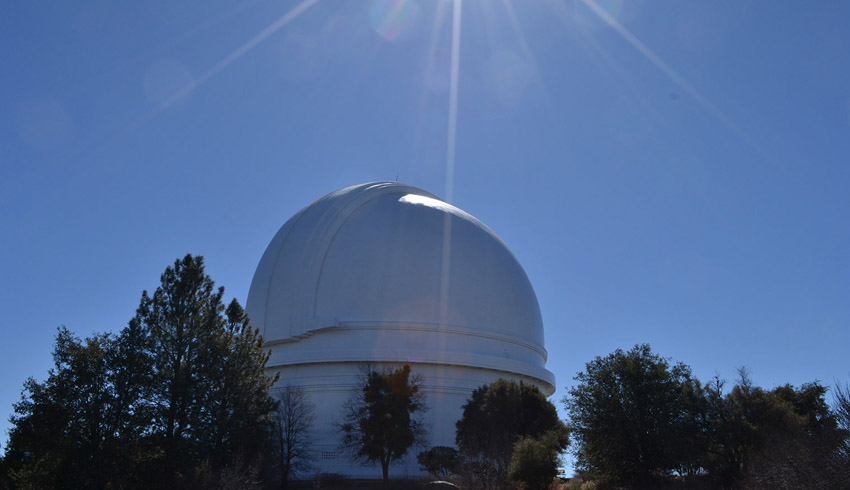The infrared instrument at Palomar Observatory's Hale Telescope holds the promise of deepening our understanding of planets beyond our sun.
The darkness surrounding the Hale Telescope breaks with a sliver of blue sky as the dome begins to open, screeching with metallic, sci-fi-like sounds atop San Diego County's Palomar Mountain. The historic observatory smells of the oil pumped in to support the bearings that make this giant telescope float ever so slightly as it moves to track the stars.
Since February 2018, scientists have been testing an instrument at the Hale Telescope called the New Mexico Exoplanet Spectroscopic Survey Instrument, or NESSI.
A collaboration between NASA's Jet Propulsion Laboratory in Pasadena, California, and the New Mexico Institute of Mining and Technology, NESSI was built to examine the atmospheres of planets that orbit stars beyond our sun, or exoplanets, providing new insights into what these worlds are like.
So far, NESSI has checked out two "hot Jupiters", massive gas giants orbiting close to their stars and too scorching to sustain life. One, called HD 189773b, has such extreme temperatures and winds that it may rain glass sideways there. The other, WASP-33b, has a "sunscreen" layer of atmosphere, with molecules that absorb ultraviolet and visible light.
Recently, NESSI observed these planets crossing their host stars, proving the instrument would be able to help confirm possible planets previously observed by other telescopes. Now it is ready for more detailed studies of distant cousins of our solar system. And while the instrument is designed to look at planets much larger than Earth, NESSI's methods could be used to search for Earth-size planets someday as well, once future technologies become available.
"NESSI is a powerful tool to help us meet the family," said Mark Swain, an astrophysicist and the JPL lead for NESSI.
"Twenty-five years ago, to our best knowledge, we thought we were alone. Now we know that – at least in terms of planets – we're not, and that this family is extensive and very diverse."
NESSI began as a concept in 2008 when Swain visited Michelle Creech-Eakman's astrobiology class at New Mexico Tech. Over coffee, Swain told his colleague about exoplanet observations he had done with a ground-based telescope that didn't turn out well.
Creech-Eakman realised a different instrument combined with the right telescope could accomplish Swain's goals. On a napkin, the two sketched an idea for what would become NESSI.
They designed the instrument for the Magdalena Ridge Observatory in Magdalena, New Mexico. But once the researchers began using it in April 2014, the instrument didn't work as expected.
Relocating NESSI – a five-foot-tall (1.5-metre) blue, cylindrical device with wires coming out of it – wasn't just a matter of placing it on a truck and driving southwest. The electrical and optical systems needed to be reworked for its new host and then tested again.
NESSI also needed a way to communicate with a different telescope, so University of Arizona doctoral student Kyle Pearson developed software to operate the instrument at Palomar. By early 2018, NESSI was ready to climb the mountain.
A crane lifted NESSI more than 100 feet (30 metres) to the top of the Hale Telescope on 1 February 2018. Technicians installed the instrument in a "cage" at the Hale's prime focus, which enables all of the light from the 530-ton telescope to be funneled into NESSI's detectors.
The team celebrated NESSI's glimpse of its first star on 2 February 2018, but between limited telescope time and fickle weather, more than a year of testing and troubleshooting would pass (never mind the time the decades-old lift got stuck as Rob Zellem, an astrophysicist at JPL, and Swain ascended to the telescope cage).
As the team continued making adjustments in 2019, Swain tapped a local high school student to design a baffle – a cylindrical device to help direct more light to NESSI's sensors. This piece was then 3D-printed in JPL's machine shop.
When NESSI finally detected transiting planets on 11 September 2019, the team didn't pause to pop open champagne. Researchers are now working out the measurements of HD 189773b's atmosphere. The team has also compiled a list of exoplanets they want to go after next.

